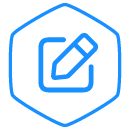Last Updated: October 9, 2024, 5 pm UTC
As those working in the development of combination products likely know, the Food and Drug Administration (FDA) issued two new draft guidances in December 2019. The guidances – Requesting FDA Feedback on Combination Products and Bridging for Drug-Device and Biologic-Device Combination Products– were published in response to the 21st Century Cures Act and Prescription Drug User Fee Act VI, respectively.
The two documents clarify best practices for communication during interaction with the agency and provide a framework for identifying gaps in development programs that may result from the unique properties of the combination product despite well-known constituent parts. Complex generic combination products often use or require new chemical formulations and/or delivery methods.
Perhaps the two most newsworthy elements of both guidances include clarification around Combination Product Agreement Meetings (CPAMs) and the introduction of the Analytical Framework for Gap Analysis. It is easy to see these as corollary guidances – one describing a conceptual, data-driven analysis framework to guide combination product development and the other clarifying the interaction process to agree on acceptable data packages for multiple U.S. regulatory applications (IDE, IND,PMA, NDA, BLA, 501[k], HDE, etc.).
The Combination Product Agreement Meeting (CPAM) provides a durable agreement mechanism with the agency potentially akin to a Special Protocol Assessment with the Center for Drug Evaluation and Research and Center for Biologics Evaluation and Research (CBER) (Federal Food, Drug, and Cosmetic Act 505[b][5][B]) or a Product Development Protocol with the Center for Devices and Radiological Health (CDRH) (Code of Federal Regulations [CFR] Title 21 Part 814.19).
Due to the need for clarity and transparency in such agreements, the FDA urges that this mechanism not be used until indication and composition (including engineering) of the combination are fully understood. CPAMs, therefore, may not be granted unless sufficient information can be provided, suggesting that this mechanism should be used later in the development cycle when the to-be-marketed combination has been clearly defined. Interactions earlier in development or at any time may proceed as indicated by each center’s policies, procedures, and application-based meeting guidances.
The analytical framework outlined in the Bridging for Drug-Device and Biologic-Device Combination Products guidance is a process many of us use every day in one way or another. “Bridging” is defined in this guidance as the process of establishing the scientific relevance of information developed in an earlier phase of the development program or another development program to support the combination product for which an applicant is seeking approval. It has long been used to leverage previously generated data and contemporaneous relevant data to construct meaningful databases to support multiple scientific claims and cases, be it in support of a 505(b)(2) application; Chemistry, Manufacturing, and Controls material changes; applicability of data collected in various patient populations; 510(k) clearance; or others.
The framework both reaffirms similar exercises frequently used in most organizations compliant with Good Manufacturing Practice and 21 CFR 820 and provides a useful exercise for the uninitiated, providing three hypothetical examples of assessing and identifying actionable data and defining the remaining gaps of a combination development program where bridging studies of multiple sorts may be required to support the relevance of the proposed data to be relied on.
Once a combination product is close to fully conceptualized and understood in enough detail to allow discussion of scientific and engineering specifics, it may be possible to agree on data development plans with the lead center at the FDA using the CPAM, which, if completed as agreed, should facilitate a timely application review. Choosing the right partner can help you streamline the path to development and make the most of your interactions with the agency. Learn more about our services at: https://www.premierconsulting.com/solutions/.

 Perspectives Blog
Perspectives Blog 


